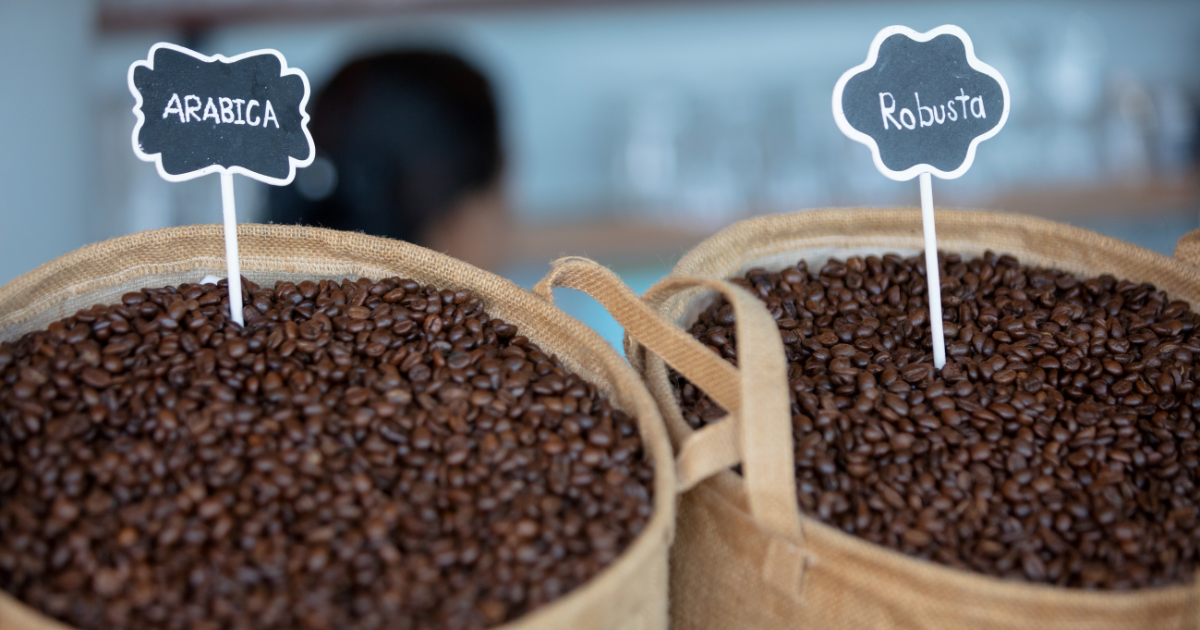Robusta vs. Arabica: How Environment Shapes Coffee Flavor
Robusta and Arabica coffee, the two “queens” ruling the coffee world, captivate enthusiasts with their unique, signature flavors. Just like people, each coffee variety has its own “taste” for its living environment. The conditions where coffee plants grow directly shape their flavor—impacting bitterness, acidity, sweetness, and even caffeine content.
So, what’s the secret behind these differences? Let’s explore how environmental factors influence the flavors of Robusta Coffee and Arabica.

1. Why Does the Environment Affect Coffee Flavor?
The environment plays a crucial role in defining coffee’s flavor profile. Key environmental factors include:
Temperature, Rainfall, and Humidity
-
Coffee thrives best at temperatures between 18°C and 25°C.
-
High temperatures speed up ripening, producing coffee with strong bitterness and acidity.
-
Lower temperatures slow ripening, creating bright acidity and a lighter aroma.
-
-
Heavy rainfall supports growth but can dilute sweetness and flavor. Insufficient rain stresses plants, impacting taste.
-
High humidity encourages fungal growth, reducing coffee quality, while low humidity can cause beans to dry out and lose complexity.
Soil Type, pH, and Nutrient Levels
-
Coffee plants grow best in loose, well-drained, nutrient-rich soils.
-
Heavy clay retains too much water, leading to root rot and disease.
-
Sandy soils drain too quickly, depriving plants of water and nutrients.
-
-
Soil pH matters: low pH can cause aluminum toxicity, while high pH can lead to iron and manganese deficiencies. The ideal range is pH 5.5–6.5.
-
Essential nutrients include nitrogen, potassium, phosphorus, calcium, magnesium, and trace minerals.
Shade Trees
-
Shade trees help regulate temperature and humidity, protect soil from erosion, and provide nutrients. They also foster biodiversity, supporting beneficial wildlife.
Farming Practices
-
Proper fertilization, irrigation, pruning, and harvesting techniques ensure healthy plants, higher yields, and better coffee quality.
2. How Environment Shapes Robusta vs. Arabica Coffee
Environmental conditions affect the flavors and characteristics of Robusta and Arabica in different ways. Here’s a comparison:
| Factor | Robusta Coffee | Arabica Coffee |
|---|---|---|
| Climate | Thrives in hotter, humid climates (24°C–30°C). | Prefers mild, cooler climates (18°C–23°C); sensitive to heat. |
| Rainfall | Needs more rainfall (2,200–3,000 mm/year). | Prefers moderate rainfall (1,200–2,000 mm/year); prone to fungal diseases in heavy rain. |
| Soil | Less demanding; can grow in varied soils, even nutrient-poor. | Requires loose, well-drained, nutrient-rich soils. |
| Altitude | Grows best below 800m, producing higher yields. | Grows best at 1,000–2,000m, delivering superior cup quality. |
3. Why Choosing the Right Environment Matters
Robusta and Arabica are the two most widely consumed coffee varieties worldwide, each with distinct characteristics and flavors. Selecting the right environment is critical for ensuring quality, yield, and sustainability.
-
The environment directly impacts acidity, bitterness, sweetness, and caffeine content.
-
Coffee grown in ideal conditions is healthier, more resistant to pests and diseases, and delivers the best flavor profiles.
-
Sustainable farming in the right environment also helps protect ecosystems, reducing negative impacts on nature.
4. Conclusion
Understanding how environmental factors shape the flavors of Vietnamese Robusta Coffee and Arabica helps us appreciate their differences. Each variety thrives in its own conditions, and choosing the right environment is key to ensuring quality, resilience, and sustainable growth for Vietnam’s coffee industry.
